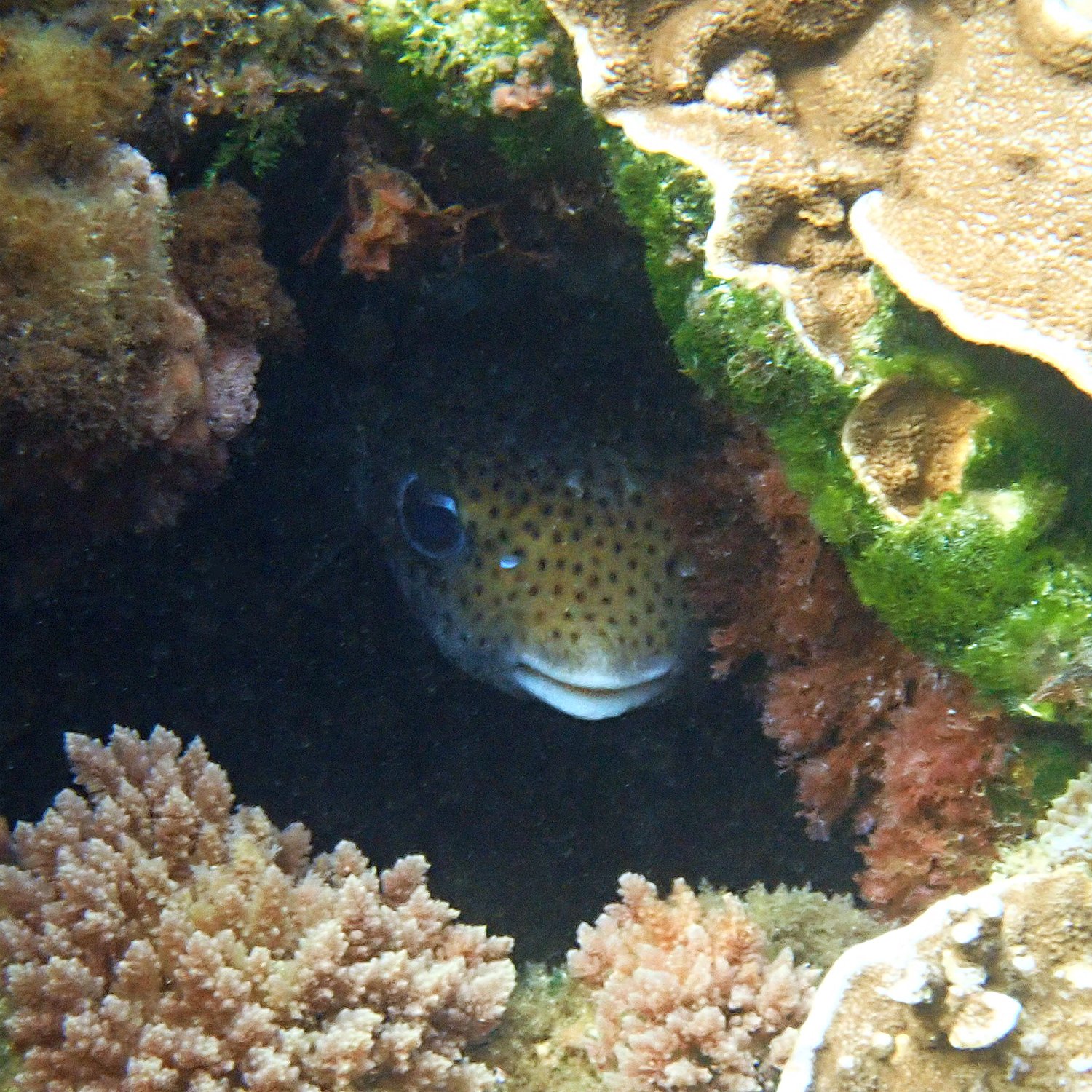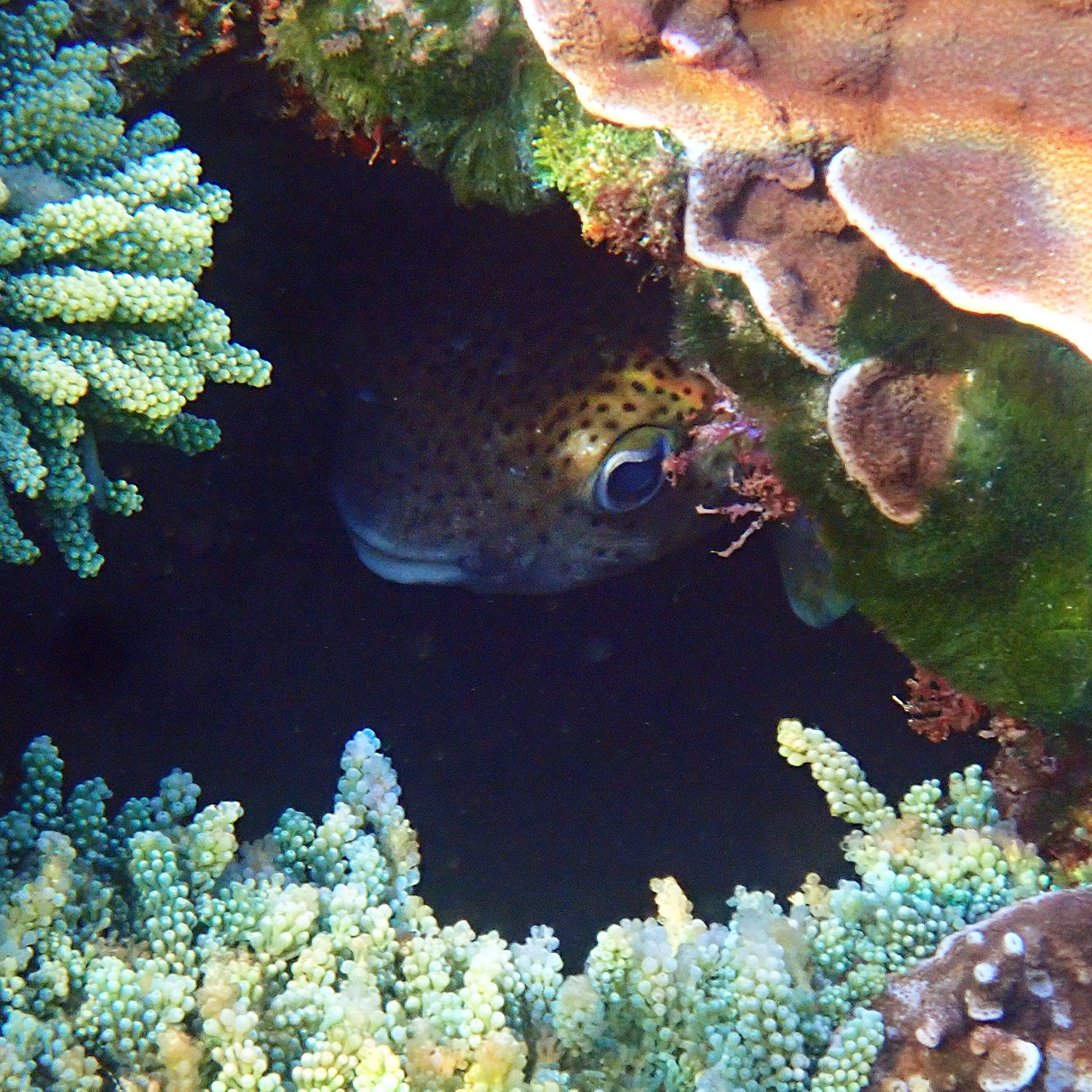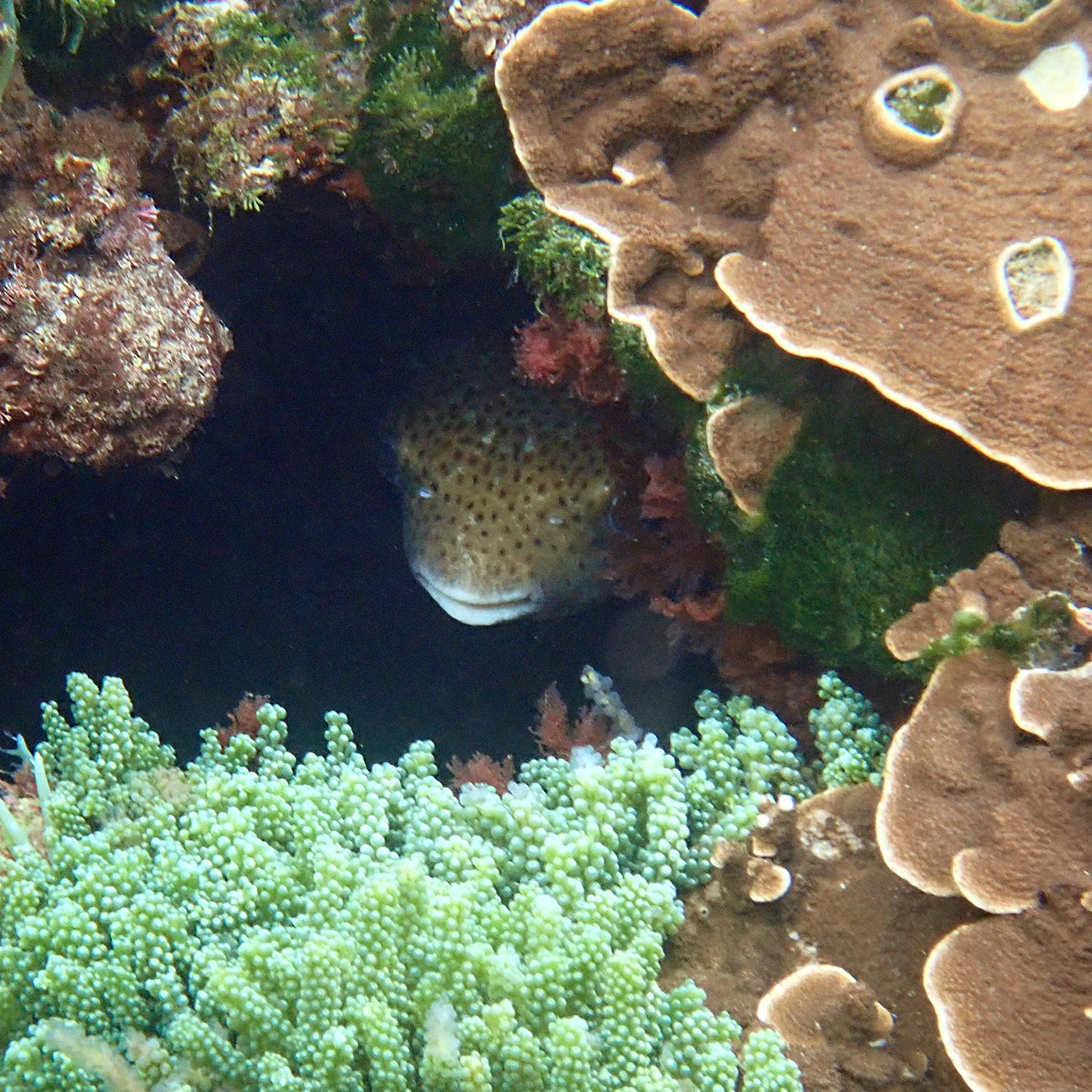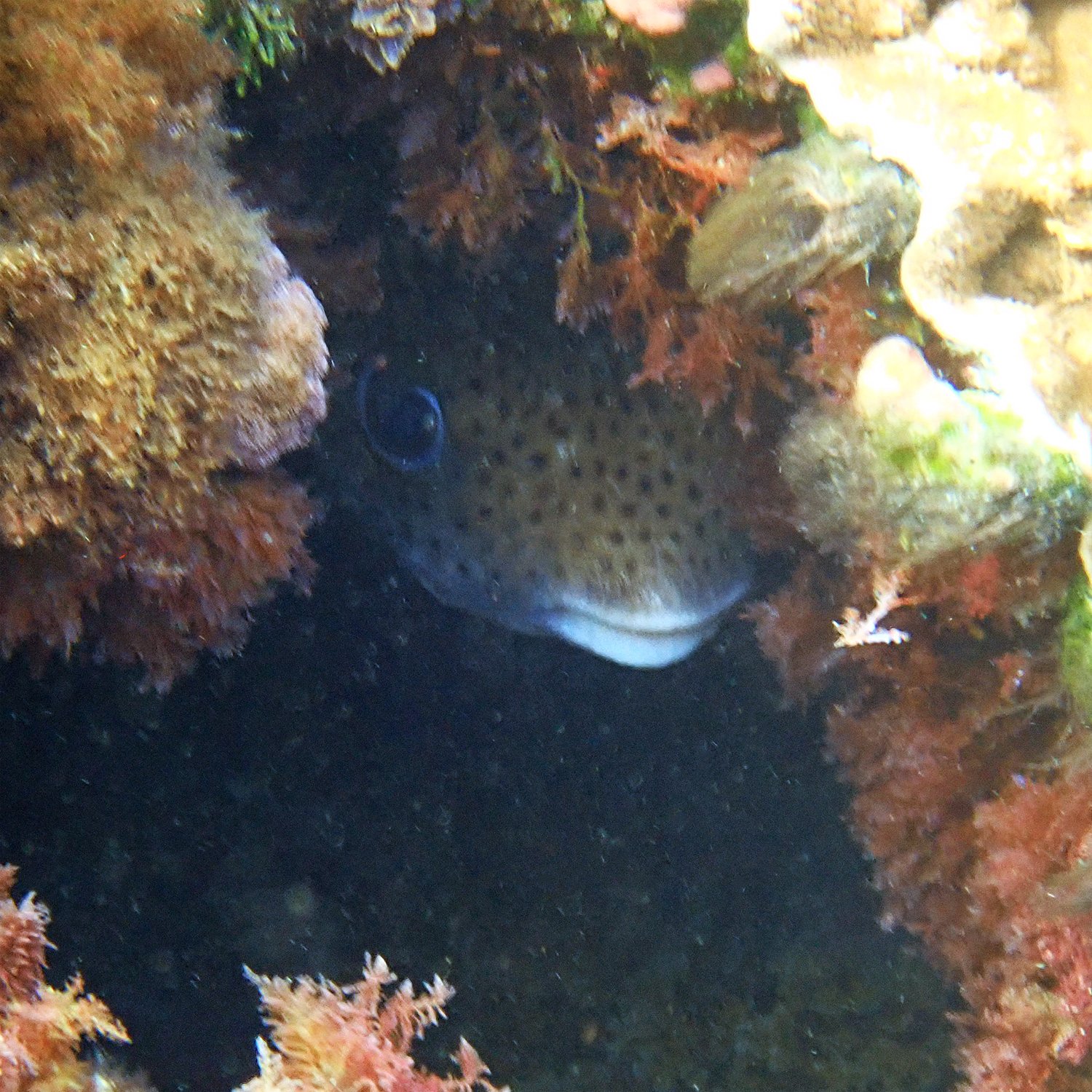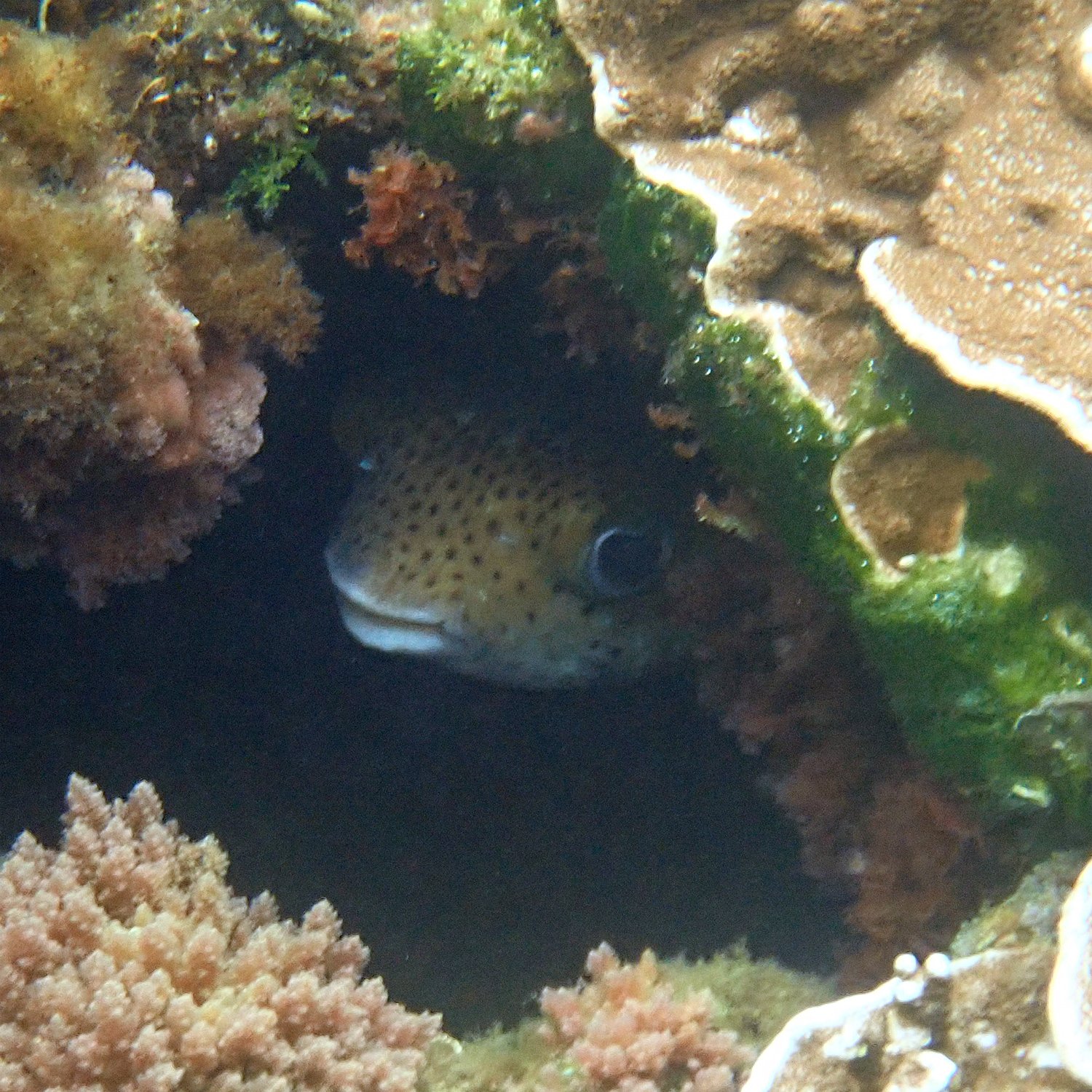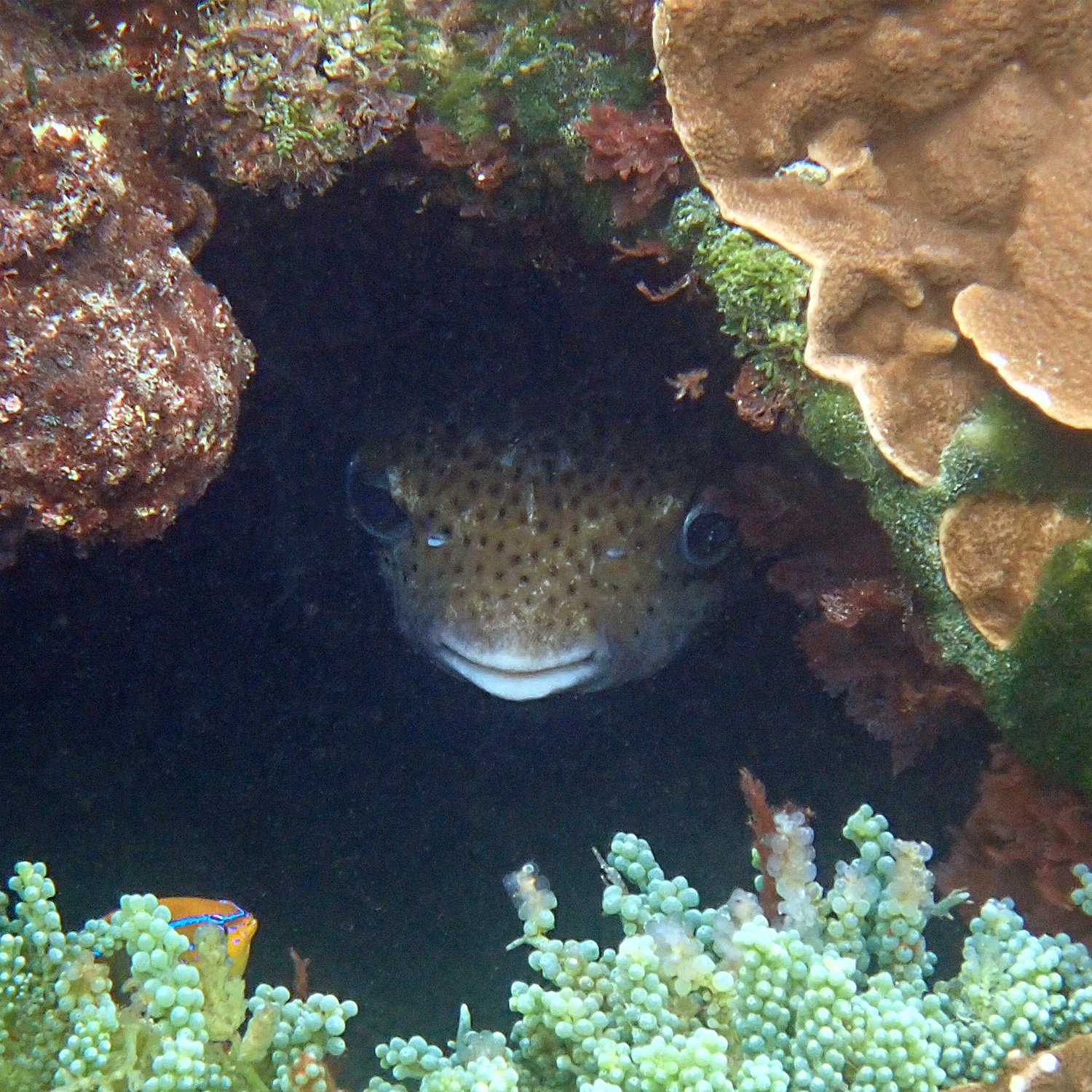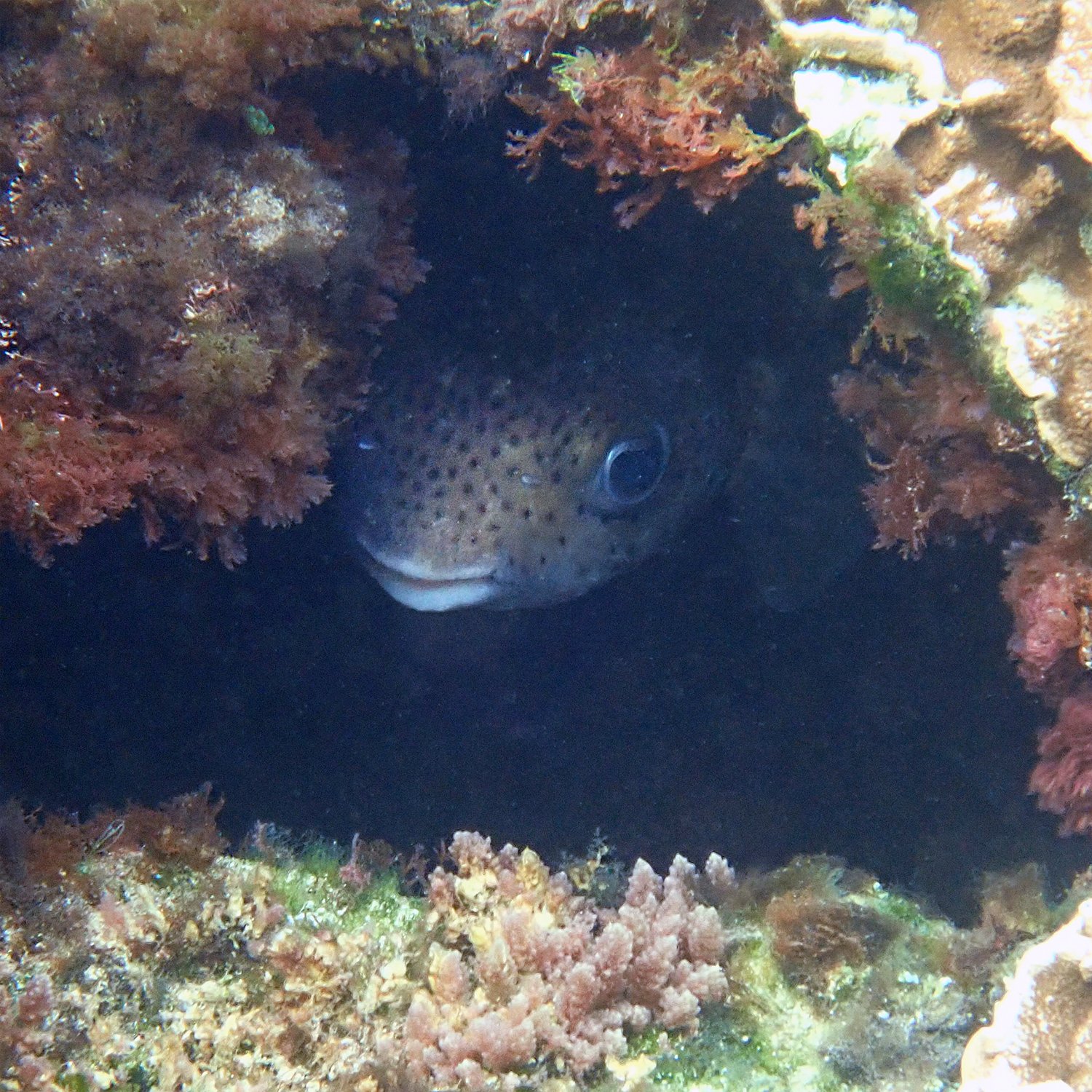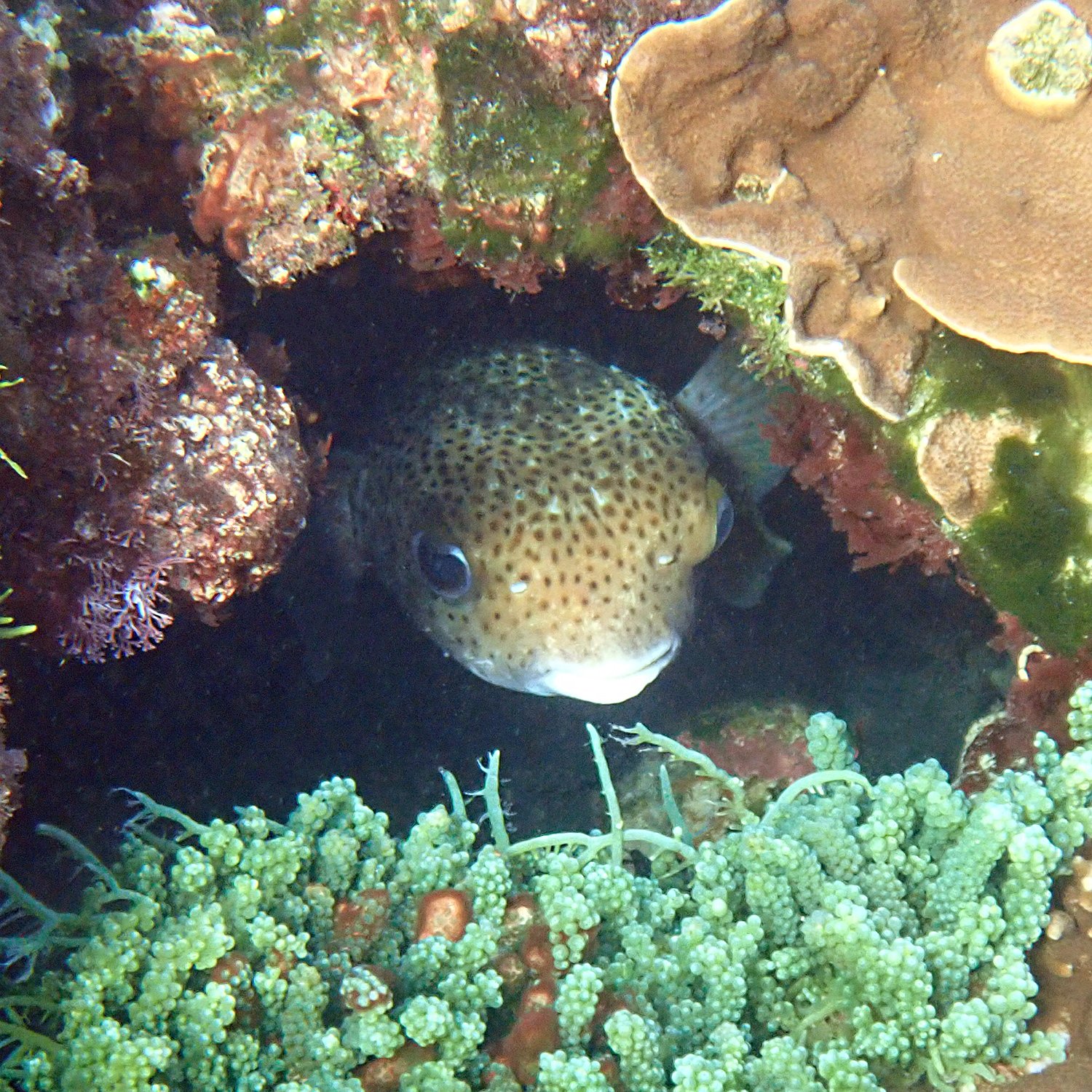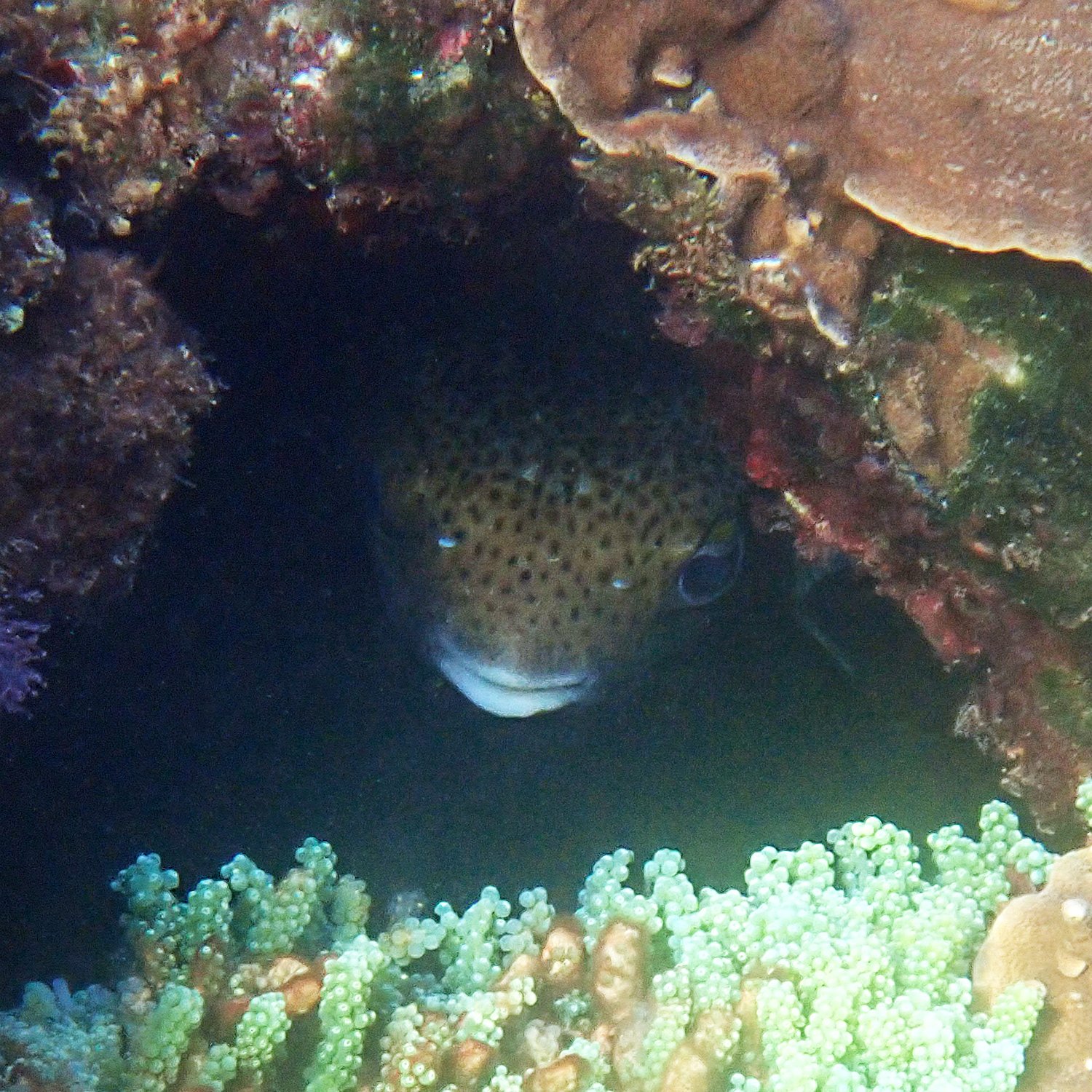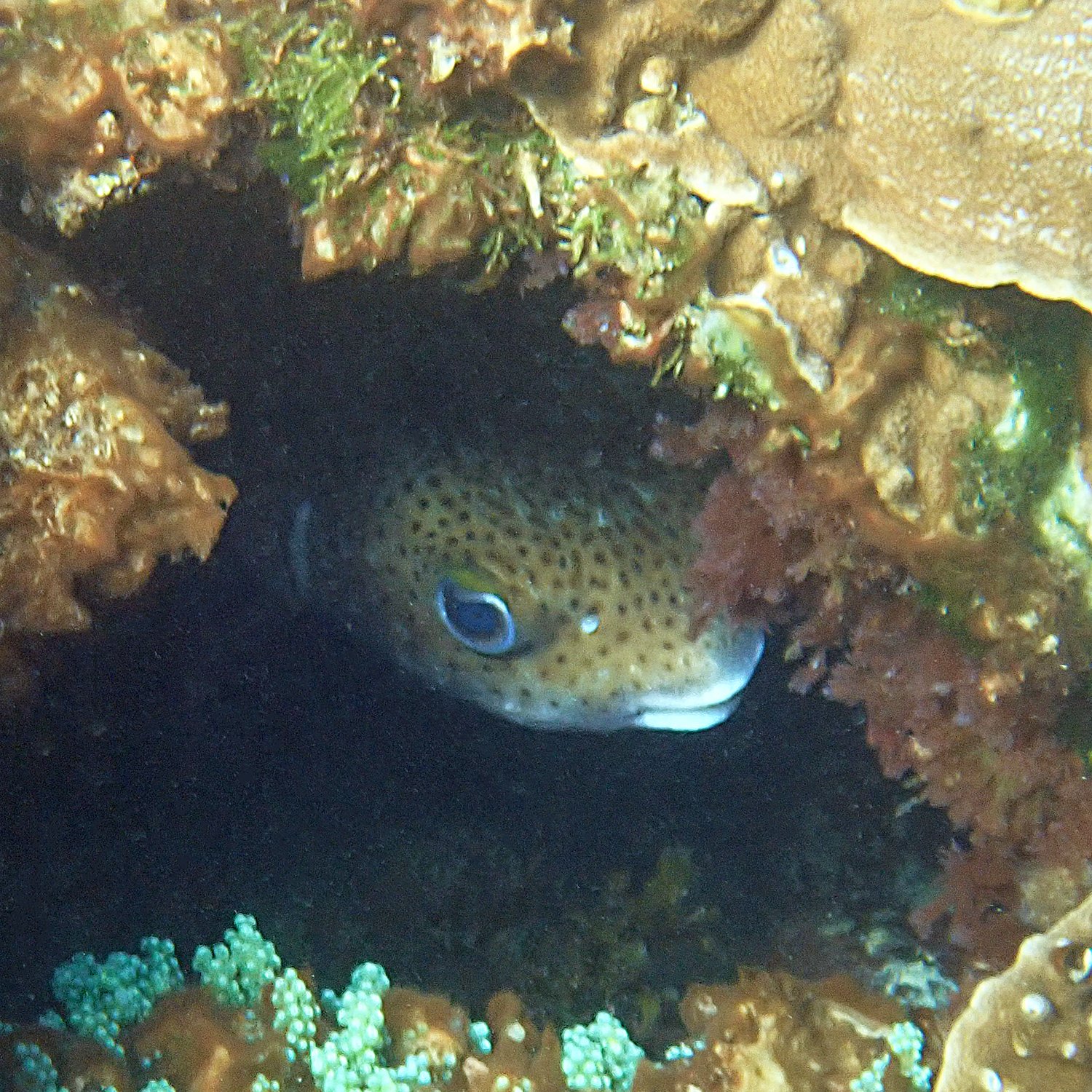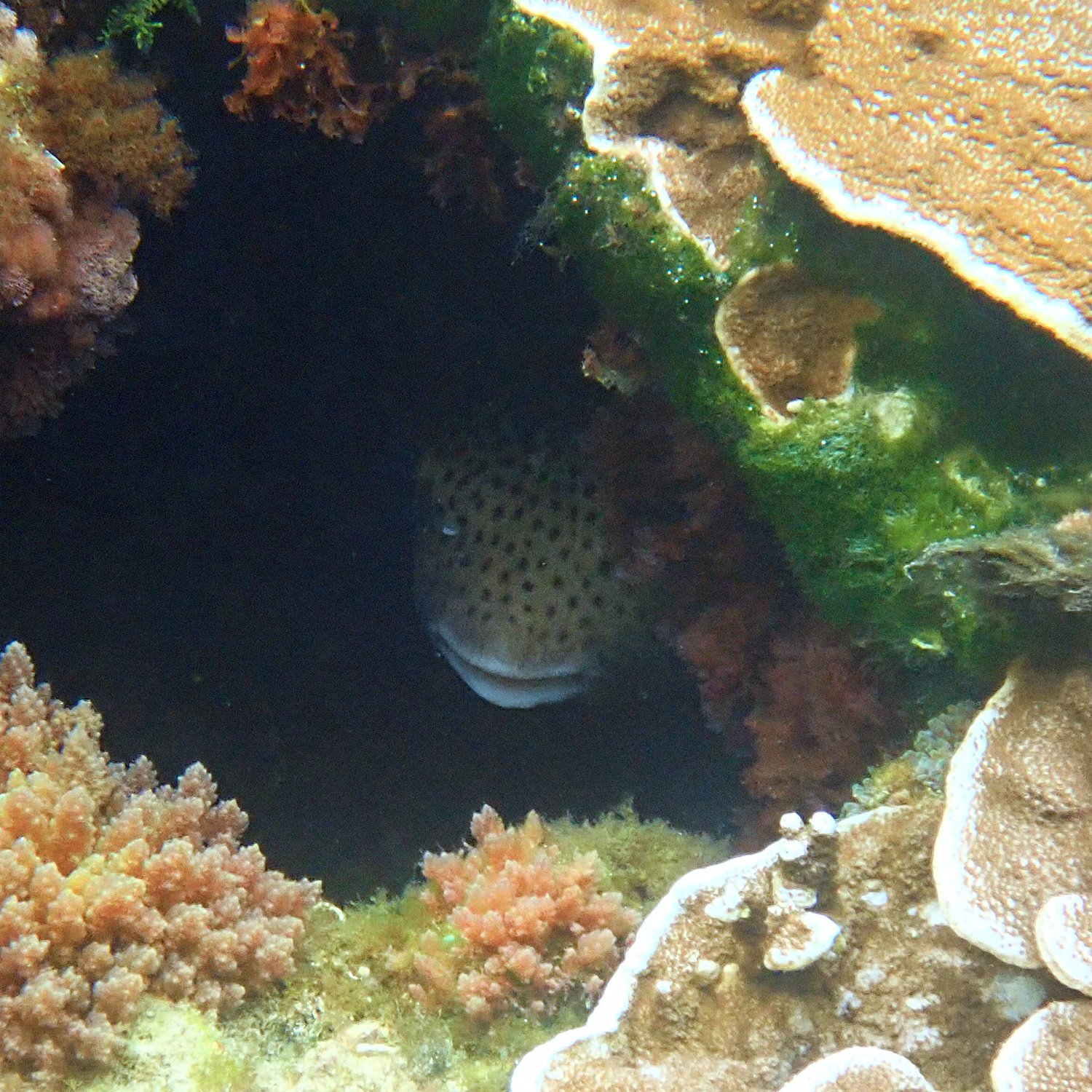I wade into the water from the beach. Often I will have Emily Bay, a coral-fringed reef lagoon on remote Norfolk Island, all to myself, especially in the cooler months. I pull on my snorkel and mask, tuck my camera into my bathers and strike out across the bay.
I’ve been swimming these waters for years. The first time was more than twenty years ago, when I lived on the island for a period of almost five years. Now I’ve returned to live here again and have slotted easily back into my old routine. If anything, I have more time now; my children are adults with babies of their own.
Swimming is my exercise, my mental health break, my meditation, and even my intellectual stimulation as I observe, photograph, identify and ask questions about this amazing habitat. I’ve even built a website of my observations (this one!). Wild swimming fills all my senses whereas lap swimming in a pool is a bland imitation, a make-do when you have no other options. I know I’m fortunate and I’ve been spoilt – even so I still jokingly refer to Emily Bay as #mylaplane.
I mix it up when it comes to the route I follow, but more often there are particular places I like to visit; I might check out the octopus’s den to see if she is still home; the bluespine unicornfish who charges back across the channel when she sees me coming; the bluestreak cleaner wrasse as he diligently and methodically grooms his clients who are queuing patiently waiting their turn. I catch the smoky pullers as they perform their sweet courtship dance, pausing to kiss each other every now and then. I shoo the banded scalyfins, a kind of damselfish, who charge at me from their carefully tended garden patches of algae. On Norfolk these fish are called aatuti by the locals in the Norf’k language. I’d often get a nip from these bumptious critters, but not so much these days. I fancy that they know me now, but maybe I am just being whimsical.
I give him the thumbs up. Look carefully and you can just see his white lips in the cave!
I know where they’ll all be hanging. And as I watch them, they watch me.
One guy I always make sure to stop by and say hello to is Old Gnarly, a spotted porcupinefish, known here as a swal doodle. He’s tucked around a quiet corner of the inner reef, and is seldom noticed by most snorkellers, of that I am certain. He quietly watches the watery action from the deep dark safety of his cave. The entrance to this hidey hole changes depending on the seasons. Sometimes there are fleshy green algae disguising his from door, sometimes a red feathery weed. At other times it is bare. On his doorstep live an aatuti and a smaller relative, a bright orange and neon blue multispine damselfish who busily go about their business, but always being watched by the Old Gnarly, the swal doodle.
He always knows when I arrive. The first thing you see are his big luminescent white lips as he casually floats up to the door of his cave. Brown, spikey, and a little time worn, he’s not exactly beautiful. He stares unblinking from bulging eyes, seemingly impassive. I stare back. Sometimes I get my camera out and take a shot. Other times we just look at each other as we bob around in the gentle surge.
I am always the first to leave. I think he would float there all day just looking at me if I stayed. I give him a thumbs up. Sometimes two. And wend my way along the reef to the unicornfish to see how they are going.
A recent report commissioned by the United Kingdom government has found that crabs, lobsters and octopuses are sentient beings, in that they can feel pain. To me, though, sentience is more than the ability to feel pain; it is the ability to perceive things as well. Old swal doodle is curious, that much is obvious. I believe we can learn a great deal from pausing, breathing quietly, and observing. It is a way we are able to connect with nature, develop empathy, and maybe learn to stop trashing it.
I have no doubt that this old swal doodle recognises me. We both pause, connecting in some abstract way. Neither of us understands the other, but it is a beautiful and precious moment in my day, nevertheless.
Above, the many faces of Old Gnarly, the swal doodle, aka a spotted porcupinefish (Diodon hystrix).


